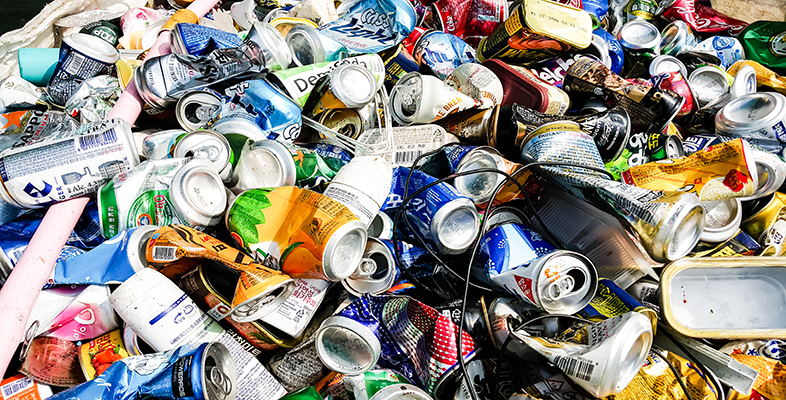Strategy 2: Understanding the composition of waste
The need for a proper understanding of the nature of the components of MSW is essential if the right treatment for the waste is to be determined. Knowledge of the nature and size of the problem is needed before it can be solved by putting in place measures to promote reduction in waste. This is shown by the example of food waste in Box 3.
Box 3 Food waste
There are signs that the Chinese people are developing western eating habits – eating more, and eating more fast food and meat and dairy products – and there are concerns about China’s ability to feed its self in the future. But what about food as waste?
Food can be lost at all stages of production, from farm to table. In a 2013 interview, Ren Zhengxiao, head of the Chinese State Administration of Grain, said that 32 million tonnes of grain are lost annually during transportation, storage and processing. Poor storage facilities, which lead to deterioration and loss from scavengers, result in the loss of 18 million tonnes of food, while poor transportation methods and inadequate packaging result in the loss of about 7 million tonnes of grain (Wei, 2016).
Food can also be thrown away in the home and in catering establishments. Then, if it is mingled with other sorts of household waste, it can present various problems. For example:
- it can decompose, and if it does so in a landfill site in conditions where there is no oxygen, methane gas is generated
- it attracts vermin and flies and gives off a bad smell
- it generally has a high water content which makes it inefficient as a fuel for waste to energy plants
- it can contaminate other components of the waste, making them more difficult to separate out.
In a pilot study conducted across eight cities in China in 2008 food waste made up over half of MSW, as Table 3 shows.
| City | Food remnants (tonnes/day) | Share in municipal solid waste (%) |
| Beijing | 725.84 | 66.19 |
| Shanghai | 588.33 | 71.14 |
| Shenzhen | 300.26 | 51.10 |
| Guangzhou | 268.79 | 52.00 |
| Nanjing | 137.65 | 70.59 |
| Hangzhou | 129.85 | 53.00 |
| Xiamen | 74.33 | 74.63 |
| Guilin | 15.20 | 61.31 |
Food waste also represents a waste of the material resources, energy and labour that went into producing the food. It also presents a moral dilemma in that even in the most highly developed economies there are always people in need of more, and more nutritious, food. As economies become more affluent, food waste generally increases (Liu, 2014), but trends can vary globally. The quantities of food waste in commercial and household waste are not easy to measure as it can require sampling of individual rubbish bins.
Countries with more developed waste systems such as the UK have been looking to improve the way they manage food waste for a few decades, but consideration of food waste is in its infancy in China. In the UK, the highest proportion of food and drink waste in the food chain was wasted in households, and this is typical of Western countries. In the UK, 7.3 million tonnes of food was thrown away in households in 2015, of which 4.4 million tonnes was deemed avoidable (WRAP, 2015). In China, a large proportion of food wastage takes place in the catering sector. Chinese etiquette requires hosts to provide large amounts of food for their guests, and the problem of food waste is especially marked in large restaurants as they are used for business discussions and banquets (Liu, 2014).
It is not easy to reduce food waste from households or the catering trade. If the cost of food increases, then this may encourage less waste. Otherwise, publicity is an important tool. In 2012, the ‘clear your plate’ campaign was started by a small but diverse Beijing non-profit group through messages on social media. This community-level action gained official approval from Chinese President Xi Jinping a year later. The campaign focused on reducing food waste when dining in restaurants, encouraging diners to order less and take any leftover food home. President Xi Jinping also launched measures to stop corruption in the Communist Party and the giving of lavish banquets (Hatton, 2013). It remains to be seen if, by these measures, China can tackle its food waste problem effectively.
In the UK in the last ten years, campaigns such as ‘Love food, hate waste’ have tried to reduce food waste, endorsed by celebrity chefs such as Jamie Oliver. However, the best available data show that while between 2007 and 2010 food waste declined by 14%, since then there has been no further decrease (WRAP, 2015). Part of the solution to minimise food waste in both China and the UK rests not just with ‘they’ but also ‘us’ and changing our behaviours.
This leaves the possibility of collecting food waste separately and attempting to extract at least some value out of it. Knowing the composition of MSW and how much of it is food waste is the first step into putting this into practice. The use of anaerobic digesters for converting animal manure into usable energy is common in China and this technology is increasingly being used to extract energy from food waste.
